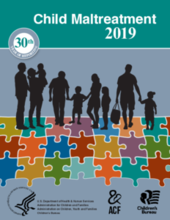Overview
All 50 states, the District of Columbia, and the U.S. Territories have child abuse and neglect reporting laws that mandate certain professionals and institutions refer suspected maltreatment to a child protective services (CPS) agency.
Each state has its own definitions of child abuse and neglect that are based on standards set by federal law. Federal legislation provides a foundation for states by identifying a set of acts or behaviors that define child abuse and neglect. The Child Abuse Prevention and Treatment Act (CAPTA), (P.L. 100–294), as amended by the CAPTA Reauthorization Act of 2010 (P.L. 111–320), retained the existing definition of child abuse and neglect as, at a minimum:
Any recent act or failure to act on the part of a parent or caretaker which results in death, serious physical or emotional harm, sexual abuse or exploitation [ ]; or an act or failure to act, which presents an imminent risk of serious harm.
The Justice for Victims of Trafficking Act (P.L. 114–22) added the requirement to include sex trafficking victims in the definition of child abuse and neglect.
The National Child Abuse and Neglect Data System (NCANDS) is a federally sponsored effort that collects and analyzes annual data on child abuse and neglect. The 1988 CAPTA amendments directed the U.S. Department of Health and Human Services to establish a national data collection and analysis program. The data are collected and analyzed by the Children’s Bureau in the Administration on Children, Youth and Families, the Administration for Children and Families (ACF) within the U.S. Department of Health and Human Services (HHS).
The data are submitted voluntarily by the 50 states, the District of Columbia, and the Commonwealth of Puerto Rico. The first report from NCANDS was based on data for 1990. The report for federal fiscal year (FFY) 2019 data is the 30th issuance of this annual publication. The following pages provide a summary of key information from this report. The information is provided in a question and answer format as the Children’s Bureau is anticipating the most common questions for each chapter of the report.
Related:

